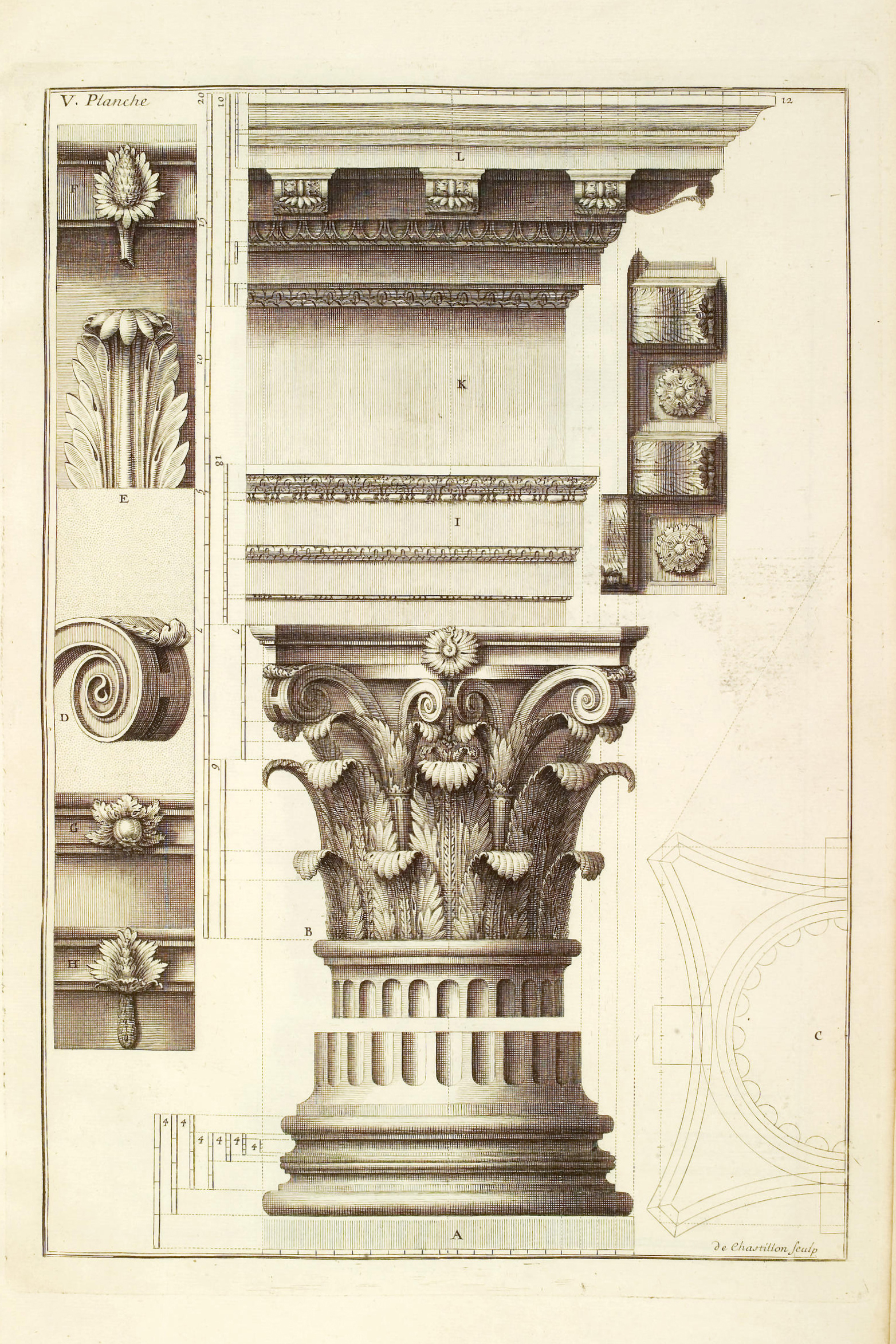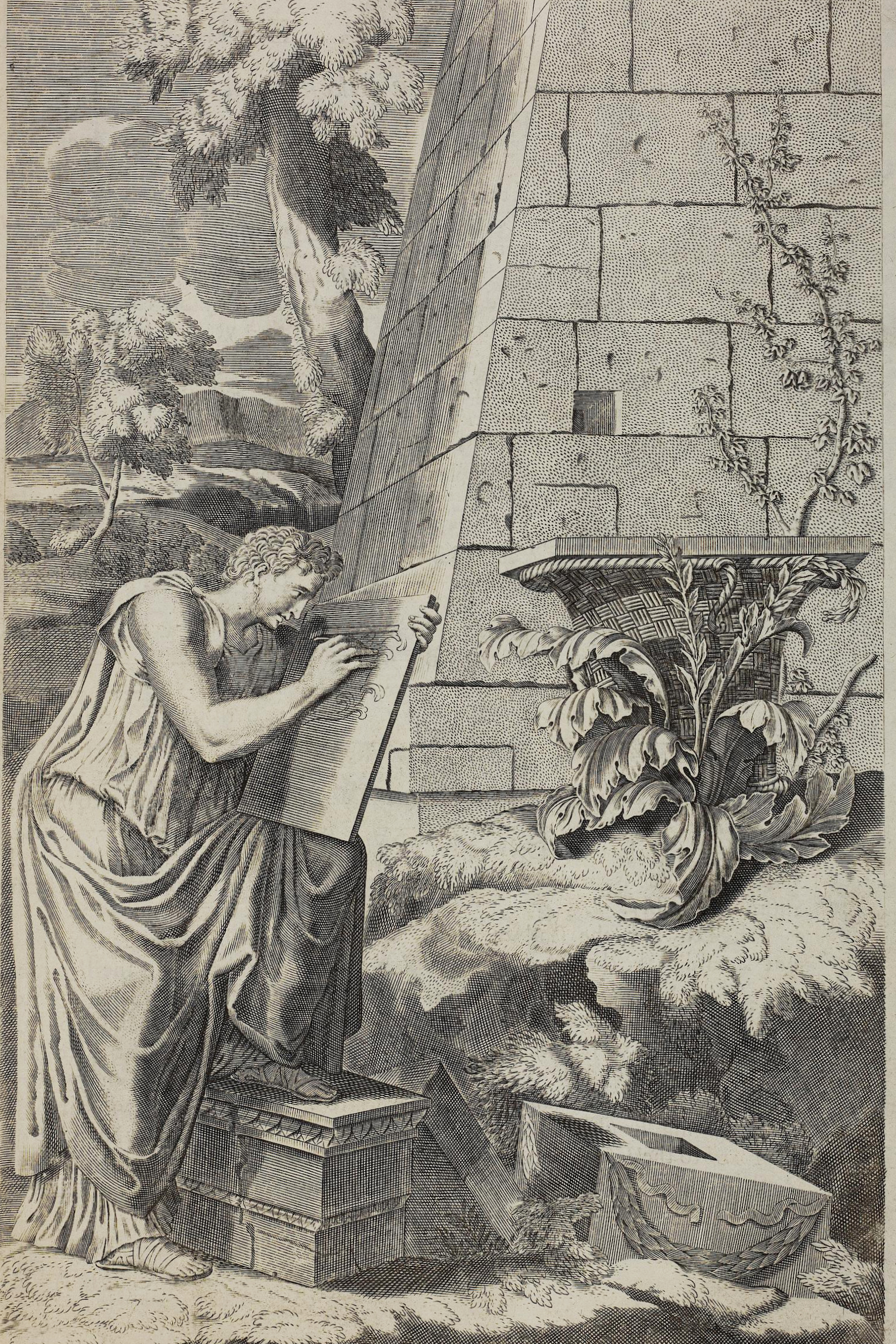In the city of Corinth, the life of a noble-woman in the prime of her youth was unexpectedly cut short by a sudden death.
The maidservant, who had cared for her throughout her brief life-span, felt compelled to gather all those personal items which she held dear.
She placed them in a wicker basket and left it by her grave, in the hope that they may bring the girl some comfort.
.
Nature merging with the Man-Made
For protection, the caring maid further covered the basket with a terracotta tile.
An acanthus bud was hidden beneath the basket full of memorabilia.
.
When spring came around, the acanthus leaves found new life and began to grow from the basket.
… the stalks, growing up along the sides of the basket, and pressed out by the corners of the tile through the compulsion of its weight, were forced to bend into volutes at the outer edges.
Book four, “The ten books on architecture” by Marcus Vitruvius.

.
Callimachus, the Perfectionist
Some illustrators have tried to capture the image described by Vitruvius as seen above.
Callimachus, the famous sculptor and architect, discovered the scene completely by chance.
.
The inspiring picture before his eyes moved him deeply.
He was widely known in Athens as a perfectionist, who was highly critical of works made by his own hands.
.

.
Embodying the Grace of Youth
Vitruvius has given the credit for laying the foundations of this style to Callimachus.
He set up the basic rules of proportion and crafted the capitals which he installed in several buildings in Corinth.
.
Thus, the new order became known as the Corinthian.
Vitruvius has associated the delicate features and profuse ornamentation of the Corinthian style with youthful femininity.
.
Solely for the Interior … ?
It appears that in the beginning, singular Corinthian columns were erected inside buildings constructed in Doric or Ionic orders, as votive elements.
The earliest instance, of such a column in history, lies in the Temple of Apollo Epicurius at Bassae.
.

.
The first structure to adopt this style externally was the Choragic Monument of Lysicrates to celebrate theatrical performance.
The circular monument is located in close proximity to the Acropolis of Athens.
.
.



.
.
Start reading in your own language by clicking on the ‘Translate’ menu below.
.



